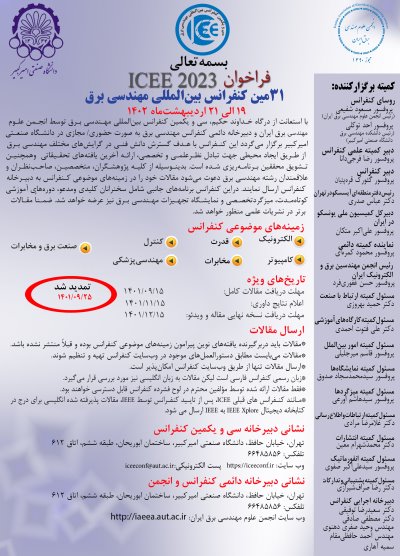0% Complete

نویسندگان :
کلمات کلیدی :
چکیده :
لیست مقالات بایگانی شده
Vahid Sohrabi Tabar - Saeid Ghassemzadeh - Sajjad Tohidi - Pierluigi Siano
Sahar Askari - Somayeh Afrasiabi
Milad Tanavardi Nasab - Arefe Amirany - Mohammad Hossein Moaiyeri - Kian Jafari
پریسا انجم شعاع - سعید اسماعیلی
Amir Esmaeili Nezhad - Mohammad Hamed Samimi
Mohammad Hossein Mousavi - Hassan Moradi CheshmehBeigi
حسین حصاربنی - زهرا کشاورز گندمانی
Seyedeh Mahsa Zakipour Bahambari - Saeed Khankalantary
زهرا عابدان - محمد حسین حسینی
Hanieh Mohammadi - Bahram Tarvirdizadeh - Khalil Alipour - Mohammad Ghamari




